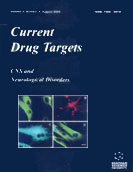Abstract
Diabetic Retinopathy (DR) is a major complication of diabetes and is a leading cause of blindness in western countries. DR has been considered a microvascular disease, and the blood-retinal barrier breakdown is a hallmark of this disease. The available treatments are scarce and not very effective. Despite the attempts to control blood glucose levels and blood pressure, many diabetic patients are affected by DR, which progresses to more severe forms of disease, where laser photocoagulation therapy is needed. DR has a huge psychological impact in patients and tremendous economic and social costs. Taking this into account, the scientific community is committed to find a treatment to DR. Understanding the cellular and molecular mechanisms underlying the pathogenesis of DR will facilitate the development of strategies to prevent, or at least to delay the progression of the disease. The involvement of the polyol pathway, advanced glycation end products, protein kinase C and oxidative stress in the pathogenesis of DR is well-documented, and several clinical trials have been conducted to test the efficacy of various drugs. More recent findings also demonstrate that DR has characteristics of chronic inflammatory disease and neurodegenerative disease, which increases the opportunity of intervention at the pharmacological level. This review presents past and recent evidences demonstrating the involvement of different molecules and processes in DR, and how different approaches and pharmacological tools have been used to prevent retinal cell dysfunction.
Keywords: diabetic retinopathy, blood-retinal barrier, polyol pathway, advanced glycation end products (ages), protein kinase c (pkc), oxidative stress, inflammation, neurodegeneration
 3
3

















